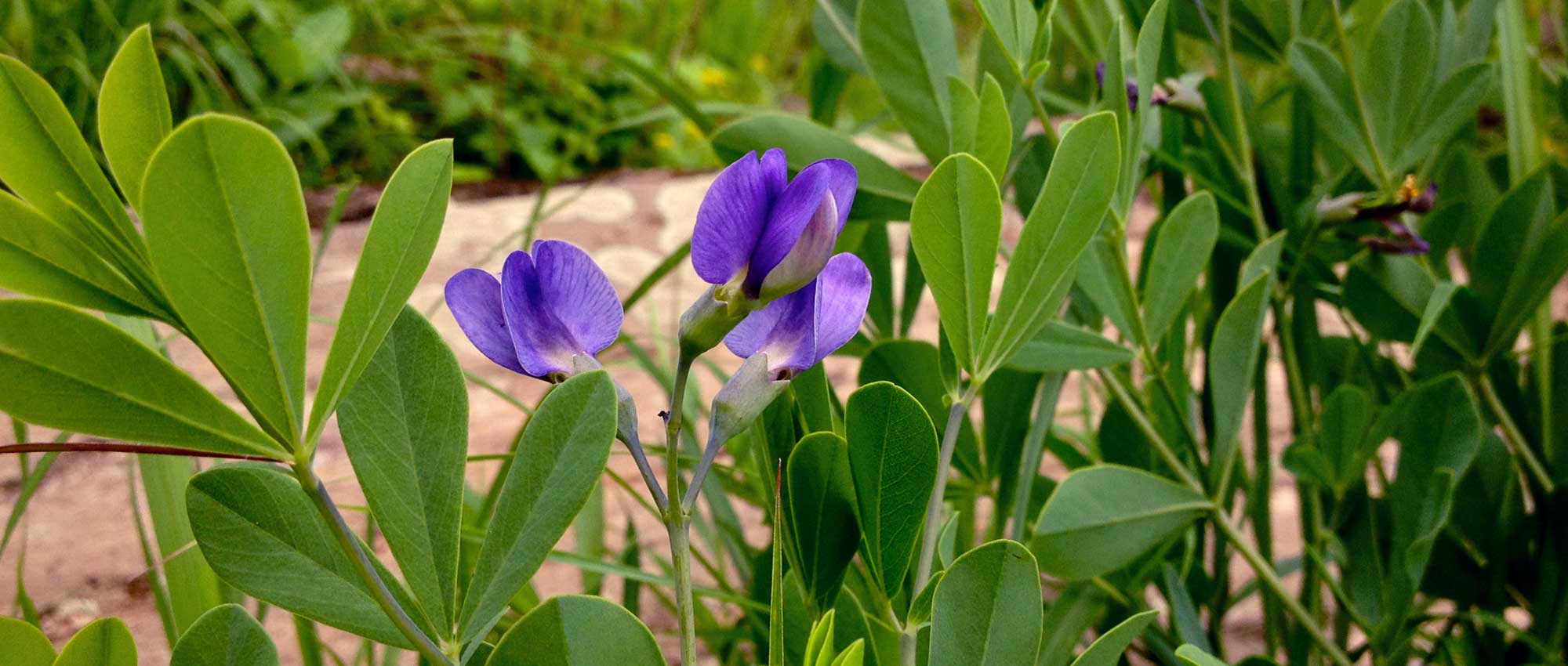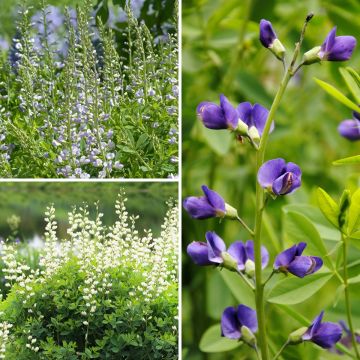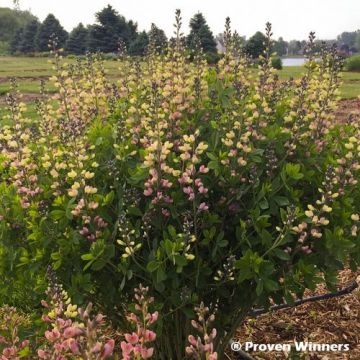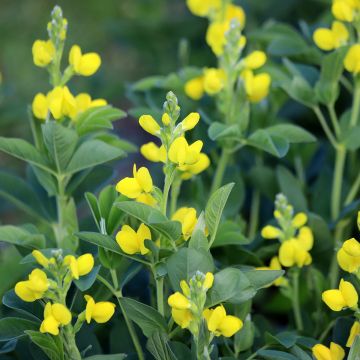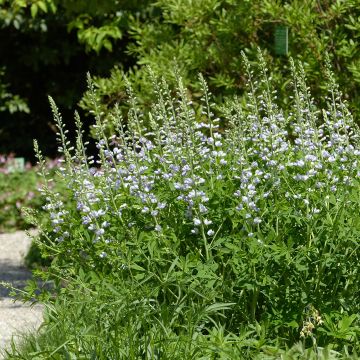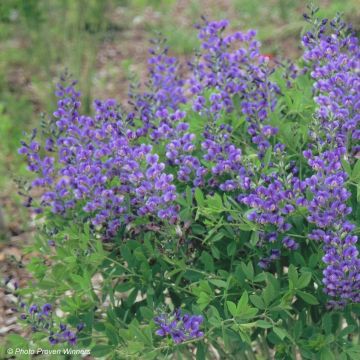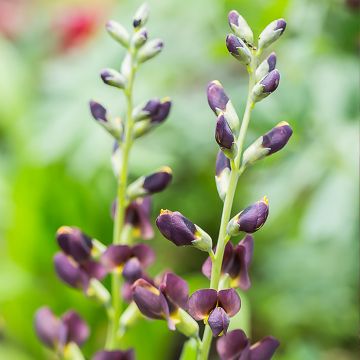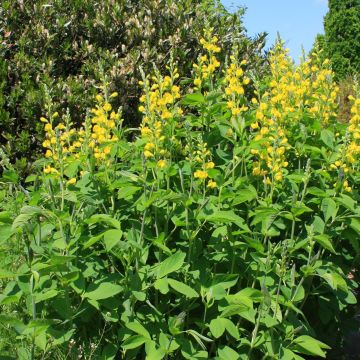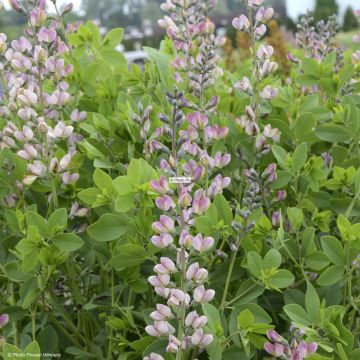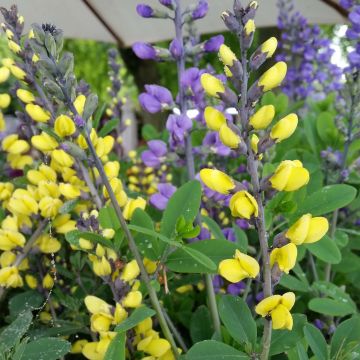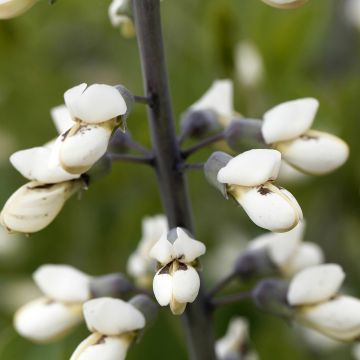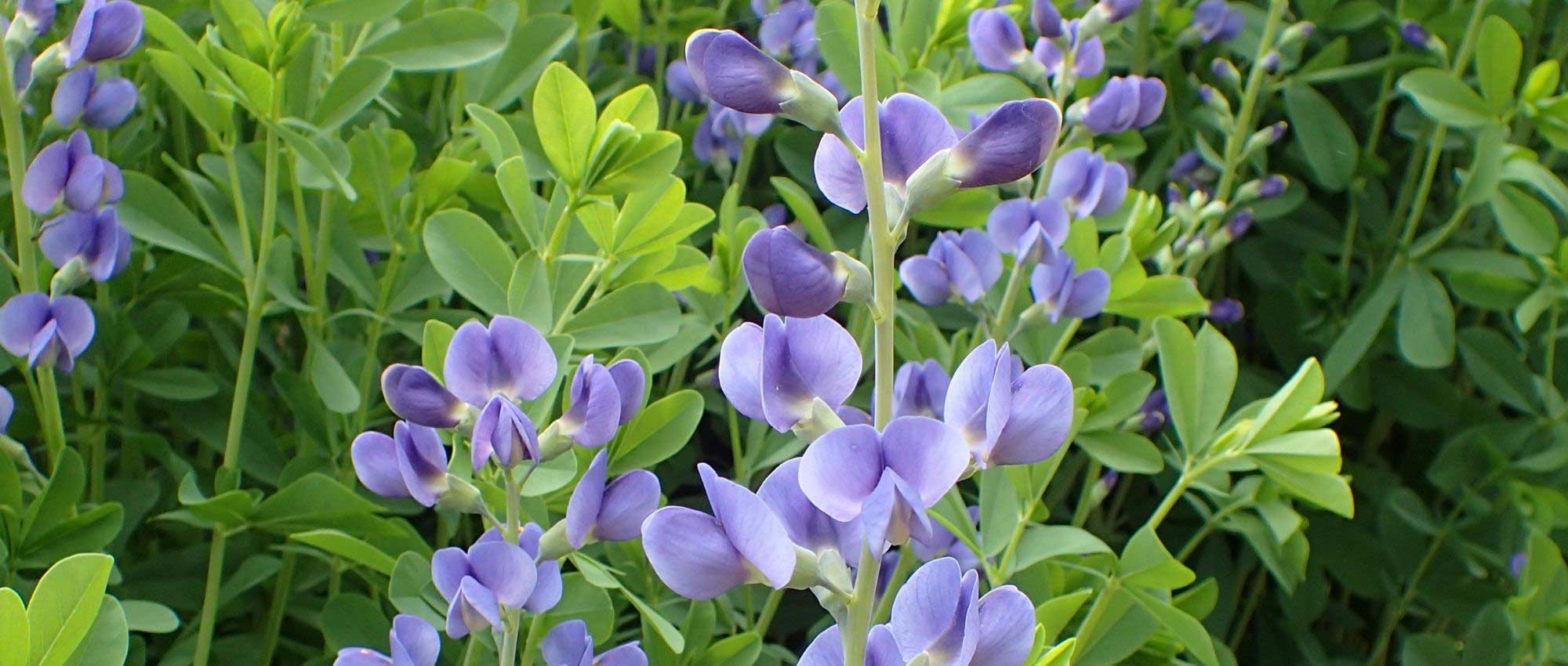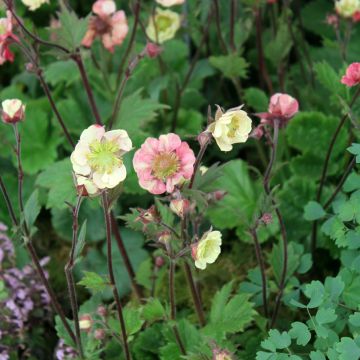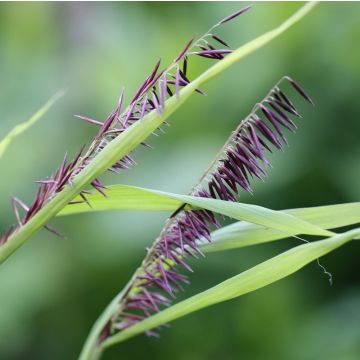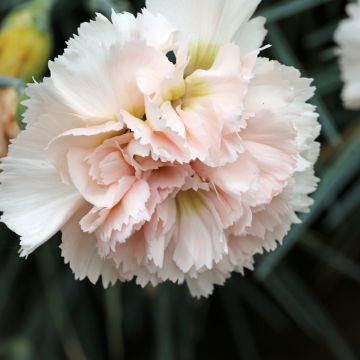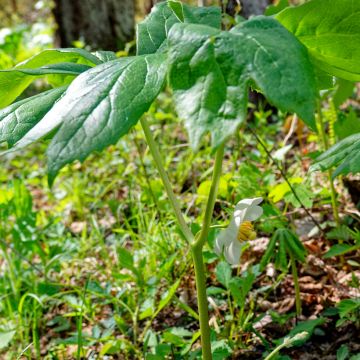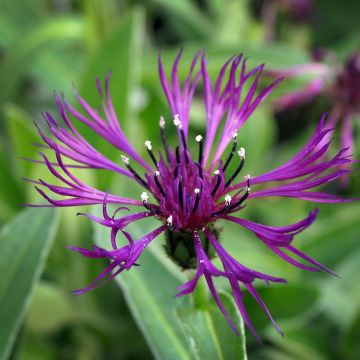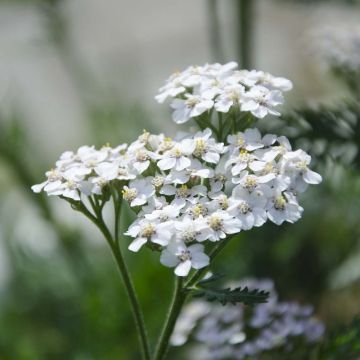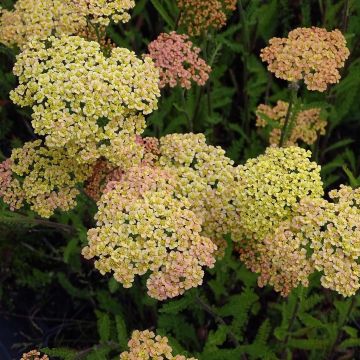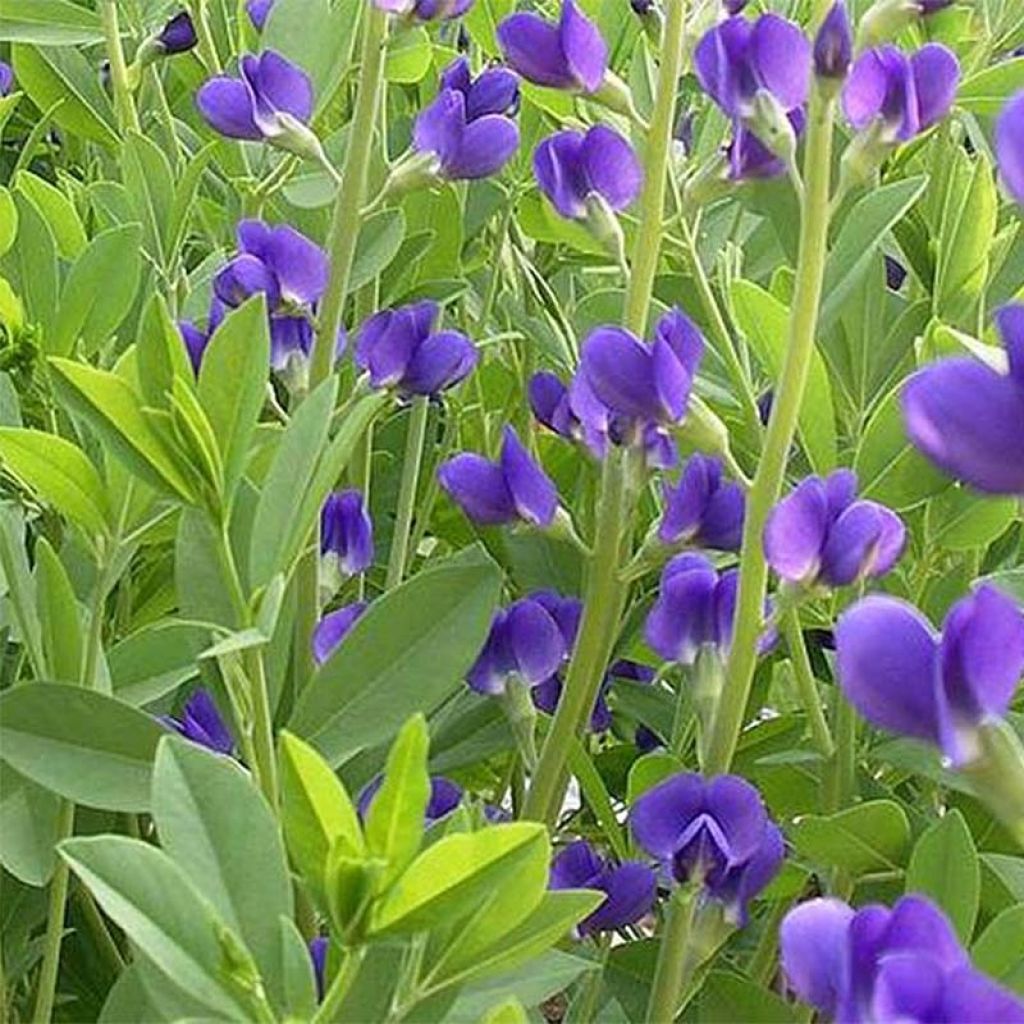

Baptisia australis Caspian Blue - False Indigo
Baptisia australis Caspian Blue - False Indigo
Baptisia australis Caspian Blue
False Indigo, Blue Wild Indigo
Nice sized plant. Looking forward to next summer.
pascale, 21/08/2024
Special offer!
Receive a €20 voucher for any order over €90 (excluding delivery costs, credit notes, and plastic-free options)!
1- Add your favorite plants to your cart.
2- Once you have reached €90, confirm your order (you can even choose the delivery date!).
3- As soon as your order is shipped, you will receive an email containing your voucher code, valid for 3 months (90 days).
Your voucher is unique and can only be used once, for any order with a minimum value of €20, excluding delivery costs.
Can be combined with other current offers, non-divisible and non-refundable.
Home or relay delivery (depending on size and destination)
Schedule delivery date,
and select date in basket
This plant carries a 12 months recovery warranty
More information
We guarantee the quality of our plants for a full growing cycle, and will replace at our expense any plant that fails to recover under normal climatic and planting conditions.
Would this plant suit my garden?
Set up your Plantfit profile →
Description
Baptisia 'Caspian Blue' is a rare variety of Indigo Lupin available for sale, which combines the vigour of its North American ancestor, the Indigo Lupin, with a abundant flowering, of a fantastic blue, almost a Gentian blue. This particularly bushy and lively plant is adorned with beautiful floral spikes adorned with very blue pea flowers, but also with a clover foliage whose texture is interesting even outside the flowering period. Baptisia australis takes its time to settle, but it is undemanding, very perennial, and proves to be very water-efficient once well established.
The 'Caspian Blue' Baptisia is a perennial plant of the Fabaceae family derived from the Baptisia australis, native to the centre of the United States. All Baptisias grow spontaneously in meadows and woods, mostly on poor, non-limestone soil, among tall grasses, without any care, perfectly tolerating frost and dry summers. They can live up to 100 years.
The 'Caspian Blue' variety has a rather spreading habit in its young age, then forms over time a well-bushy clump reaching an average height of 1m (3ft), with a similar spread. Its growth is quite slow. The flowering takes place in June-July, in the form of spikes of papilionaceous flowers reaching about 35cm (14in). Each one blooms from a dark blue bud, then it blossoms in ultramarine blue, with a keel (the lower petal) barely spotted with white. The fruit of this Baptisia, quite decorative, is a green pod that turns black when ripe. The deciduous foliage, which disappears in winter, is also very ornamental when swaying in the wind. It is composed of leaves divided into three rounded leaflets, resembling those of alfalfa or clover. This plant develops from a particular root system, which dives very deeply into the soil to extract and transform nutrients thanks to the presence of symbiotic bacteria lodged in small nodules. Like all Fabaceae, this Baptisia contributes to enriching the soil that welcomes it.
Baptisias are close cousins of lupins, which are much better known in Europe. But they are much less demanding in terms of humidity, even though they share a preference for acidic soils. Anchored on very robust stumps, they can live long in our gardens but take time to settle. The 'Caspian Blue' false indigo can perfectly replace a small bush in a sunny border. It will find its place in a romantic garden, a dry garden, or in natural areas, for example with Linaria 'Peachy', sainfoin, and Indigofera gerardiana. It is also very useful for decorating a degraded plot, which often surrounds a recently built house. It is also superb in the company of pastel blooms in late spring, such as roses or peonies, or conversely with the bright pink flowers of Salvia grahamii. Very vertical perennials, like irises or tall alliums, are very complementary to Baptisias, both in terms of colour and texture. Finally, its very blue flowers highlight the chartreuse blooms of lady's mantle.
The vernacular name 'false indigo' comes from the use that some Native American peoples made of these dye plants. Indeed, they provide dye pigments comparable to those of true indigos (from the Antillean genus Indigofera), but of lesser quality.
Baptisia australis Caspian Blue - False Indigo in pictures
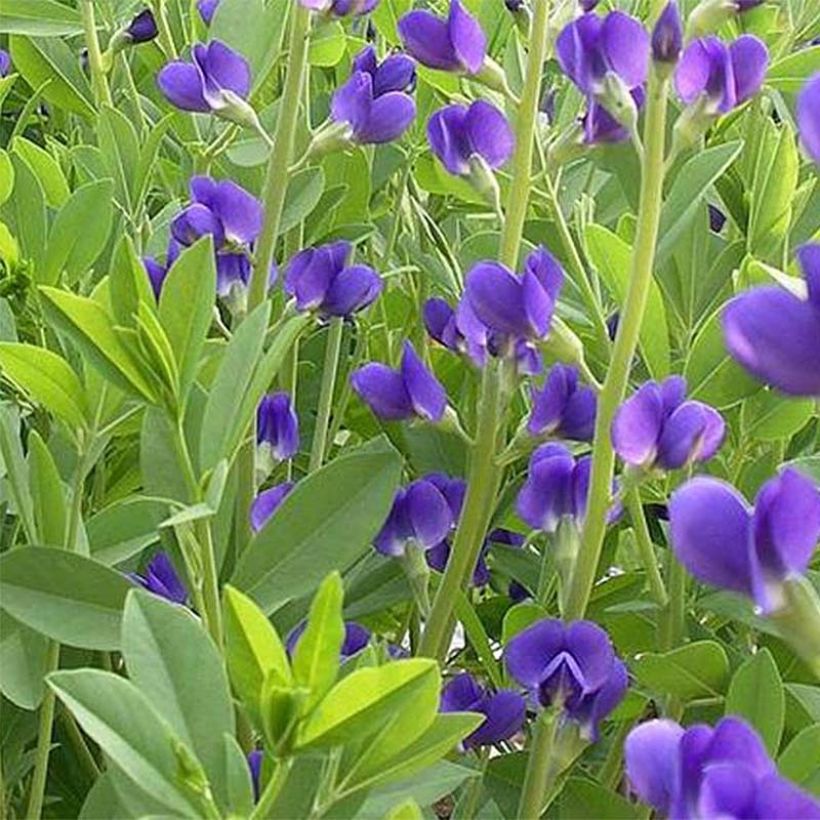

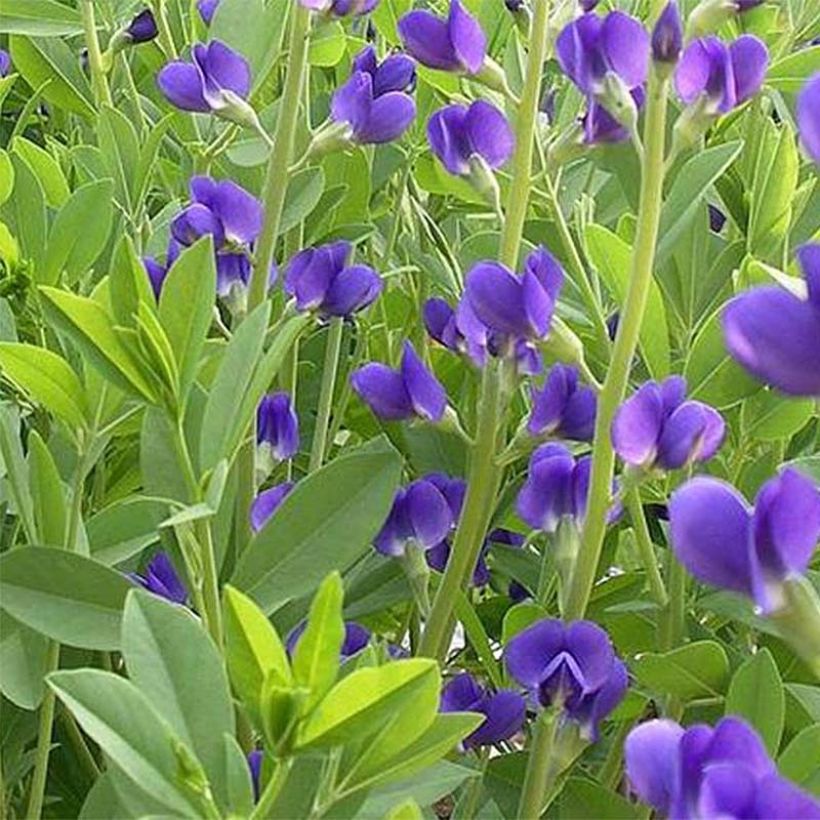

Flowering
Foliage
Plant habit
Safety measures
Botanical data
Baptisia
australis
Caspian Blue
Fabaceae
False Indigo, Blue Wild Indigo
Cultivar or hybrid
ingestion
Cette plante est toxique si elle est ingérée volontairement ou involontairement.
Ne la plantez pas là où de jeunes enfants peuvent évoluer, et lavez-vous les mains après l'avoir manipulée.
Pensez à conserver l'étiquette de la plante, à la photographier ou à noter son nom, afin de faciliter le travail des professionnels de santé.
Davantage d'informations sur https://plantes-risque.info
Other Baptisia
View all →Planting and care
The cultivation of Baptisia 'Caspian Blue' requires a bit of skill to succeed smoothly:
Not very tolerant to limestone soils, this tall perennial appreciates light and well-drained soils, but tolerates summer drought.
In the first year of cultivation, the plant seems to vegetate, it's normal. Young Baptisia are plants with very slow growth, and their taproot is particularly fragile until it is deeply anchored in the soil. Make sure not to damage it during planting! Also, do not leave a young plant in its bucket for too long: the taproot could bend when it reaches the bottom.
Possibly add a small handful of phosphate fertilizer (it's a root stimulant) that you will mix with the soil at the time of planting. Add 1/3 sand and 1/3 gravel to heavy soil to ensure good drainage, which is essential. Water moderately in the first year.
In the second or third year, the plant will be established, will not require special care, and can flower abundantly for many years!
Be careful, voles also seem to be fond of its fleshy roots...
Planting period
Intended location
Care
Planting & care advice
-
, onOrder confirmed
Reply from on Promesse de fleurs
Similar products
Haven't found what you were looking for?
Hardiness is the lowest winter temperature a plant can endure without suffering serious damage or even dying. However, hardiness is affected by location (a sheltered area, such as a patio), protection (winter cover) and soil type (hardiness is improved by well-drained soil).

Photo Sharing Terms & Conditions
In order to encourage gardeners to interact and share their experiences, Promesse de fleurs offers various media enabling content to be uploaded onto its Site - in particular via the ‘Photo sharing’ module.
The User agrees to refrain from:
- Posting any content that is illegal, prejudicial, insulting, racist, inciteful to hatred, revisionist, contrary to public decency, that infringes on privacy or on the privacy rights of third parties, in particular the publicity rights of persons and goods, intellectual property rights, or the right to privacy.
- Submitting content on behalf of a third party;
- Impersonate the identity of a third party and/or publish any personal information about a third party;
In general, the User undertakes to refrain from any unethical behaviour.
All Content (in particular text, comments, files, images, photos, videos, creative works, etc.), which may be subject to property or intellectual property rights, image or other private rights, shall remain the property of the User, subject to the limited rights granted by the terms of the licence granted by Promesse de fleurs as stated below. Users are at liberty to publish or not to publish such Content on the Site, notably via the ‘Photo Sharing’ facility, and accept that this Content shall be made public and freely accessible, notably on the Internet.
Users further acknowledge, undertake to have ,and guarantee that they hold all necessary rights and permissions to publish such material on the Site, in particular with regard to the legislation in force pertaining to any privacy, property, intellectual property, image, or contractual rights, or rights of any other nature. By publishing such Content on the Site, Users acknowledge accepting full liability as publishers of the Content within the meaning of the law, and grant Promesse de fleurs, free of charge, an inclusive, worldwide licence for the said Content for the entire duration of its publication, including all reproduction, representation, up/downloading, displaying, performing, transmission, and storage rights.
Users also grant permission for their name to be linked to the Content and accept that this link may not always be made available.
By engaging in posting material, Users consent to their Content becoming automatically accessible on the Internet, in particular on other sites and/or blogs and/or web pages of the Promesse de fleurs site, including in particular social pages and the Promesse de fleurs catalogue.
Users may secure the removal of entrusted content free of charge by issuing a simple request via our contact form.
The flowering period indicated on our website applies to countries and regions located in USDA zone 8 (France, the United Kingdom, Ireland, the Netherlands, etc.)
It will vary according to where you live:
- In zones 9 to 10 (Italy, Spain, Greece, etc.), flowering will occur about 2 to 4 weeks earlier.
- In zones 6 to 7 (Germany, Poland, Slovenia, and lower mountainous regions), flowering will be delayed by 2 to 3 weeks.
- In zone 5 (Central Europe, Scandinavia), blooming will be delayed by 3 to 5 weeks.
In temperate climates, pruning of spring-flowering shrubs (forsythia, spireas, etc.) should be done just after flowering.
Pruning of summer-flowering shrubs (Indian Lilac, Perovskia, etc.) can be done in winter or spring.
In cold regions as well as with frost-sensitive plants, avoid pruning too early when severe frosts may still occur.
The planting period indicated on our website applies to countries and regions located in USDA zone 8 (France, United Kingdom, Ireland, Netherlands).
It will vary according to where you live:
- In Mediterranean zones (Marseille, Madrid, Milan, etc.), autumn and winter are the best planting periods.
- In continental zones (Strasbourg, Munich, Vienna, etc.), delay planting by 2 to 3 weeks in spring and bring it forward by 2 to 4 weeks in autumn.
- In mountainous regions (the Alps, Pyrenees, Carpathians, etc.), it is best to plant in late spring (May-June) or late summer (August-September).
The harvesting period indicated on our website applies to countries and regions in USDA zone 8 (France, England, Ireland, the Netherlands).
In colder areas (Scandinavia, Poland, Austria...) fruit and vegetable harvests are likely to be delayed by 3-4 weeks.
In warmer areas (Italy, Spain, Greece, etc.), harvesting will probably take place earlier, depending on weather conditions.
The sowing periods indicated on our website apply to countries and regions within USDA Zone 8 (France, UK, Ireland, Netherlands).
In colder areas (Scandinavia, Poland, Austria...), delay any outdoor sowing by 3-4 weeks, or sow under glass.
In warmer climes (Italy, Spain, Greece, etc.), bring outdoor sowing forward by a few weeks.






























